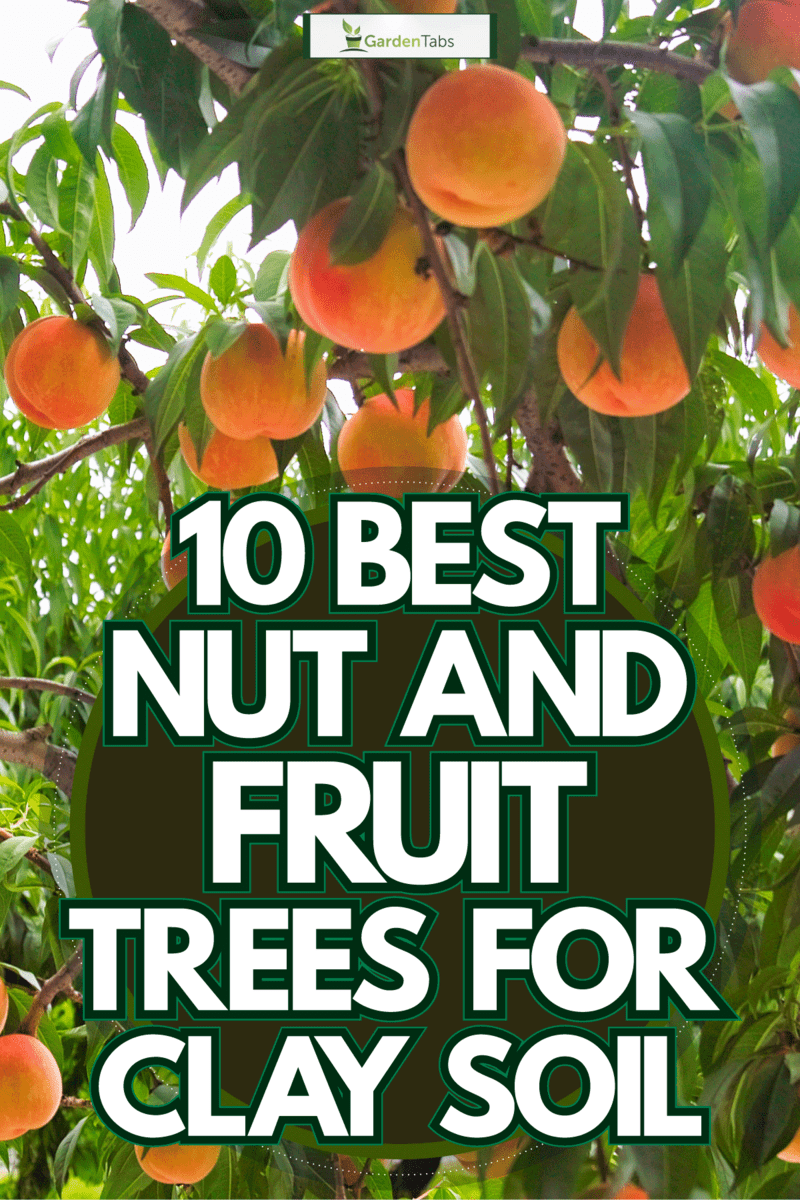Clay soil can be challenging due to its tendencies to expand with moisture, compact easily, and warm up slowly.
These conditions make it tough for many plants to thrive. Fortunately, some species of fruit and nut trees are capable of living in clay soil!
Don't let it deter you from growing delicious produce! Read on and find out which trees to plant and how to best prepare your clay soil for success.
Nut and Fruit Trees For Clay Soil
Clay soil is a type of soil that is characterized by its fine texture and its ability to retain water. It's composed of very tiny particles, which makes it dense and heavy.
When wet, clay soil can feel sticky, and when dry, it hardens and can become compacted.
Quite a few fruit and nut trees will tolerate pure clay soil but with the right amendments, you can surely plant a tree in it that will thrive.
To amend the soil, you can try adding compost, well-rotted manure, or other organic materials can improve the texture, drainage, and fertility of clay soil.
Applying organic mulch can prevent the soil surface from becoming too hard and compacted. It also adds organic matter as it decomposes.
You can also add gypsum, which helps in breaking up compacted clay, enhancing its structure.
Planting fruit and nut trees is possible on clay soil. Thus, below are some of the trees that you can try.
1. Apples (Malus Domestica)
Apple trees are the most widely grown plant in their genus. When grown from seed, they can reach up to 30 feet.
However, planting apples from seed is not a common practice because it won't grow true to type. The more preferred method is grafting.
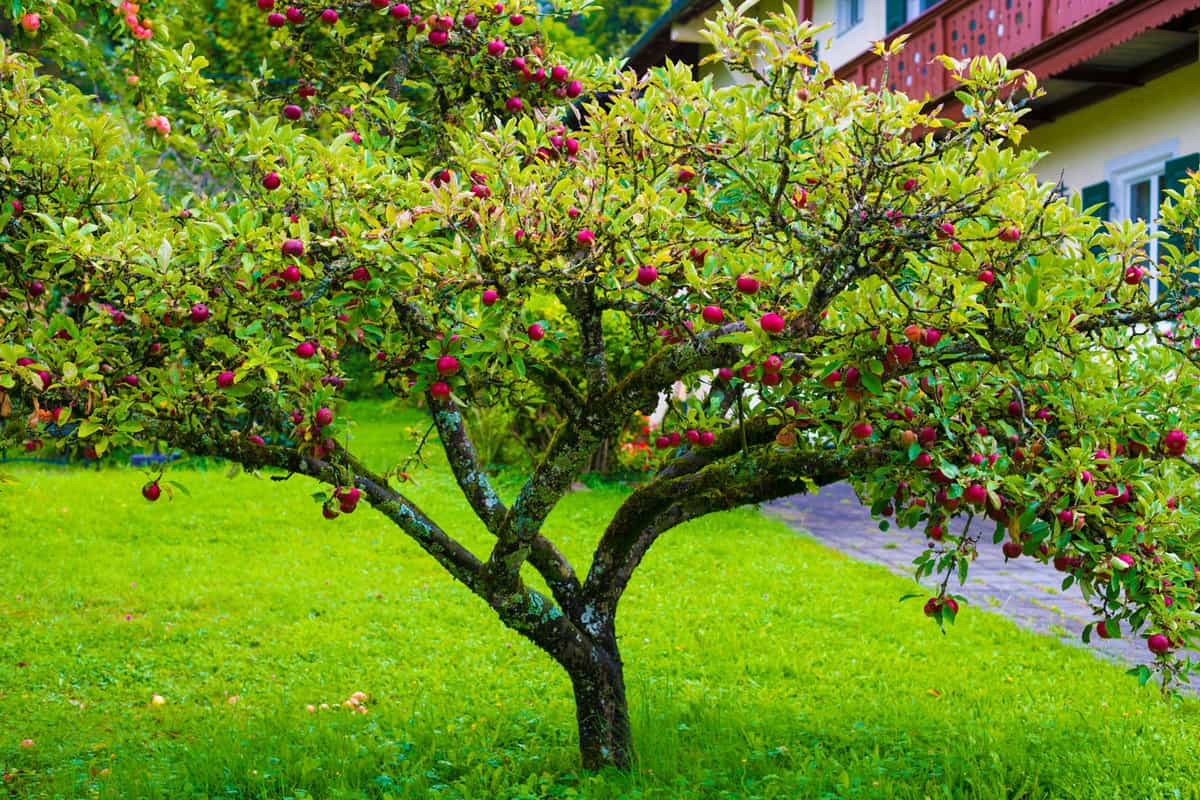
But can you grow either seed or grafted apple in clay soil? The answer is yes, but only if it's clay loam or if the soil has been amended.
Additionally, only certain apple varieties can tolerate clay soil such as crab apple.
To amend clay soil for apple tree planting, you can aerate, add mulch, and add gypsum.
Apple trees can tolerate a variety of soils, including clay and sand. They are hardy for USDA zones 4 through 9.
View this fast-acting gypsum for soil damage repair on Amazon.
2. Star Fruit (Averrhoa Carambola)
Star fruit trees are small trees that are best suited for warmer climates.
These trees will grow between 16 and 39 feet tall. They require full sun to partial shade. It's imperative to protect this tree from the afternoon sun.
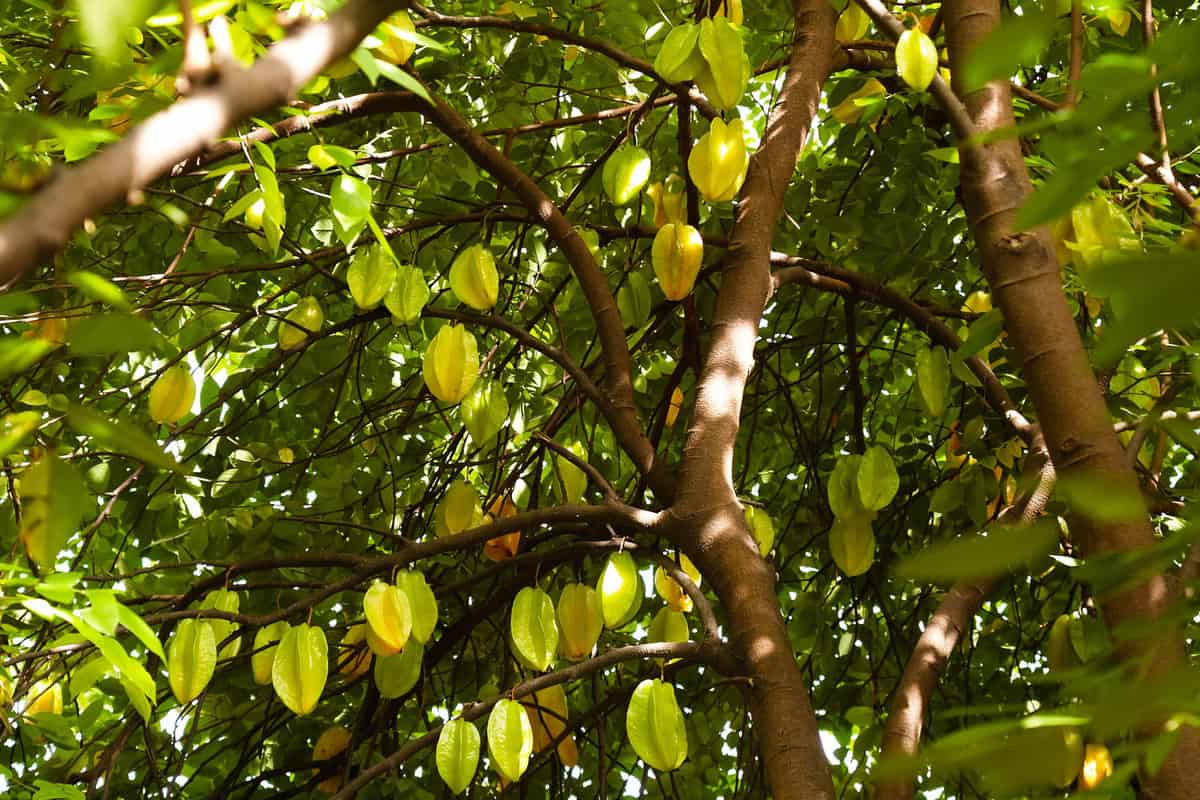
Star fruit trees are hardy for USDA zones 10 through 13.
These trees will grow best in rich loam soul but they have been known to grow in sand, limestone, and clay soil.
Another source states that it can grow in clay loam with a pH level of 6.5.
After the star fruit tree is established, it can withstand flooding for up to two weeks.
3. Common Elderberry (Sambucus Canadensis)
The American elderberry or common elderberry is a shrub or small tree. It reaches heights between 9 and 12 feet.
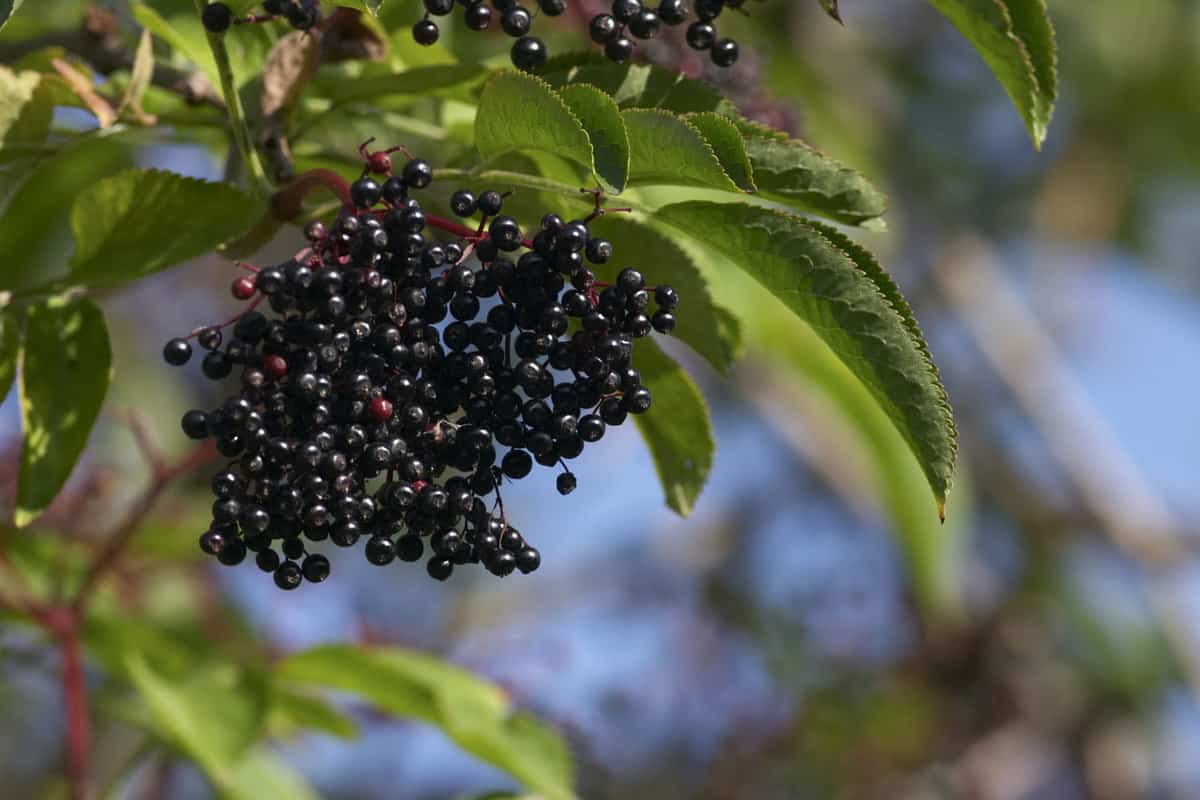
This plant is adaptable to many soil types, including clay soil, provided there is good drainage.
For optimum growth however, it prefers medium to moist soil in full sun. The common elderberry is hardy for USDA zones 4 through 9.
Keep in mind that elderberries are edible after they've been cooked. Raw elderberries, their leaves, roots, and stems are poisonous to humans. Eating them can cause nausea, vomiting, and diarrhea and can lead to coma.
4. Fig (Ficus carica)
The fig tree is a small tree or large shrub. It grows between 23 and 33 feet tall.
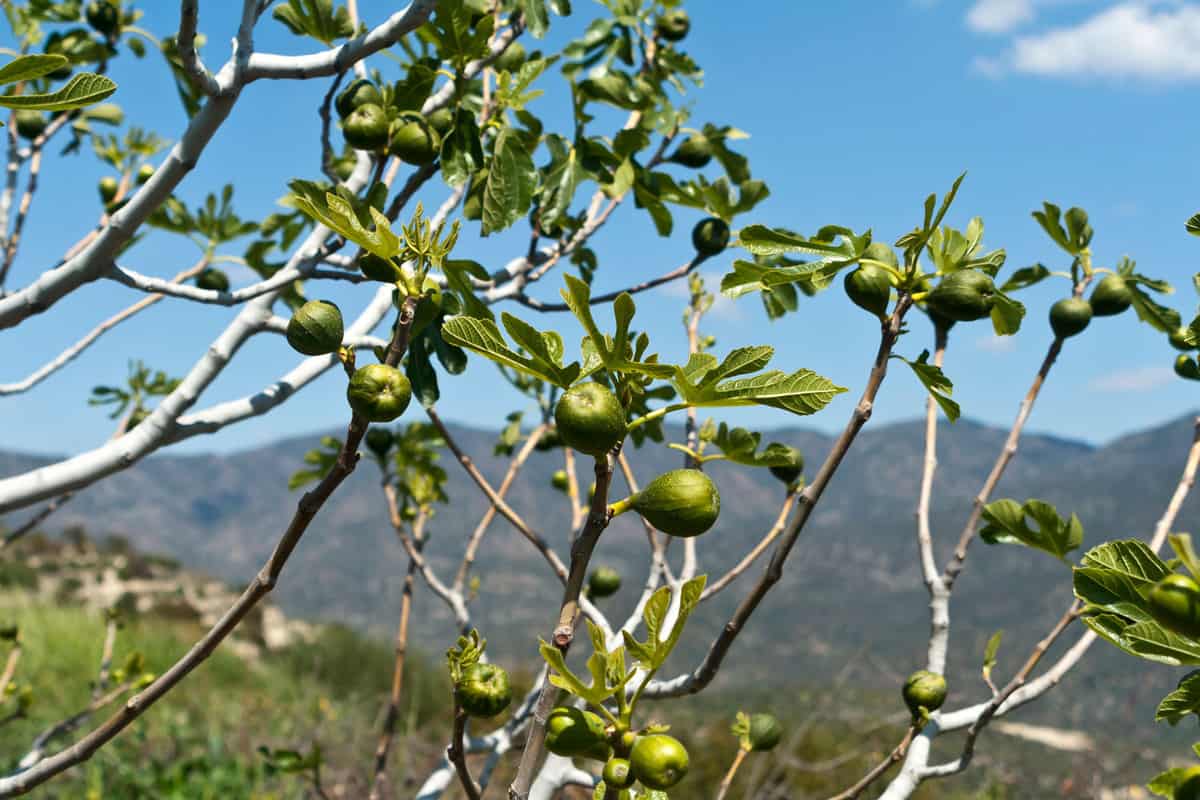
It can tolerate a wide range of soils, including heavy clay and even nutritionally poor soil.
Fig trees are hardy for USDA zones 7 through 10. They prefer full sun to partial shade. It will be essential to protect this tree from the afternoon sun.
Fig tree roots can be invasive. Depending on your rootstock, these roots can grow between 1 and 3 feet deep and spread up to 50 feet.
Fig trees also love water and could compete with nearby plants for it.
5. Peach (Prunus persica 'Redhaven')
Prunus persica 'Redhaven,' or Redhaven peach, are easy to grow plants that require little maintenance.
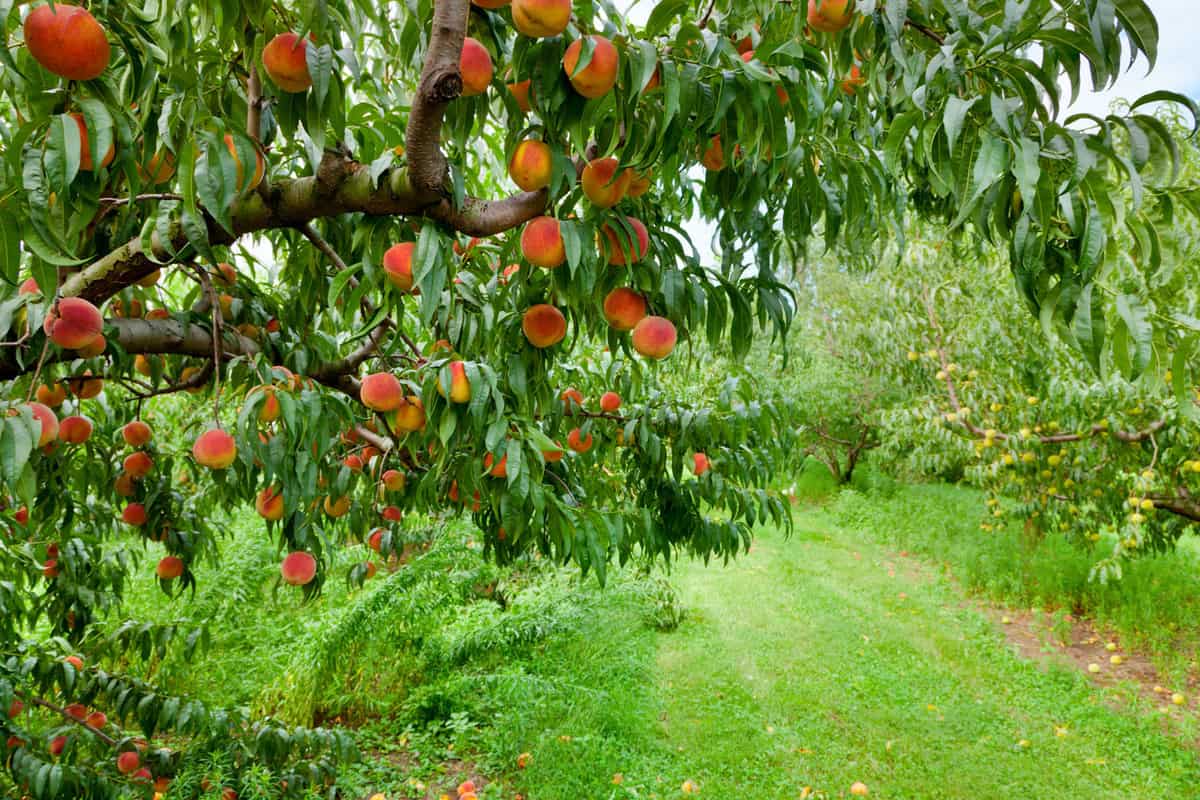
Peach trees are deciduous trees that grow up to 23 feet tall. It's hardy for USDA zones 5 through 9.
Can peach tree grow in clay soil? According to tree growers themselves, they definitely can!
It is tolerant of clay soil as long as you give them additional nutritional support such as adding either manure, biochar, wood chips, nitrogen fertilizer, and mulch.
These trees prefer well-drained soil. However, their specific soil requirements vary depending on the cultivar.
6. Pear (Pyrus communis)
The Pyrus communis or common pear can reach heights up to 50 feet. They are hardy for USDA zones 4 through 8.
You should give your pear tree full sun. For best growing conditions plant them with 12 and 24 feet space in between each tree.
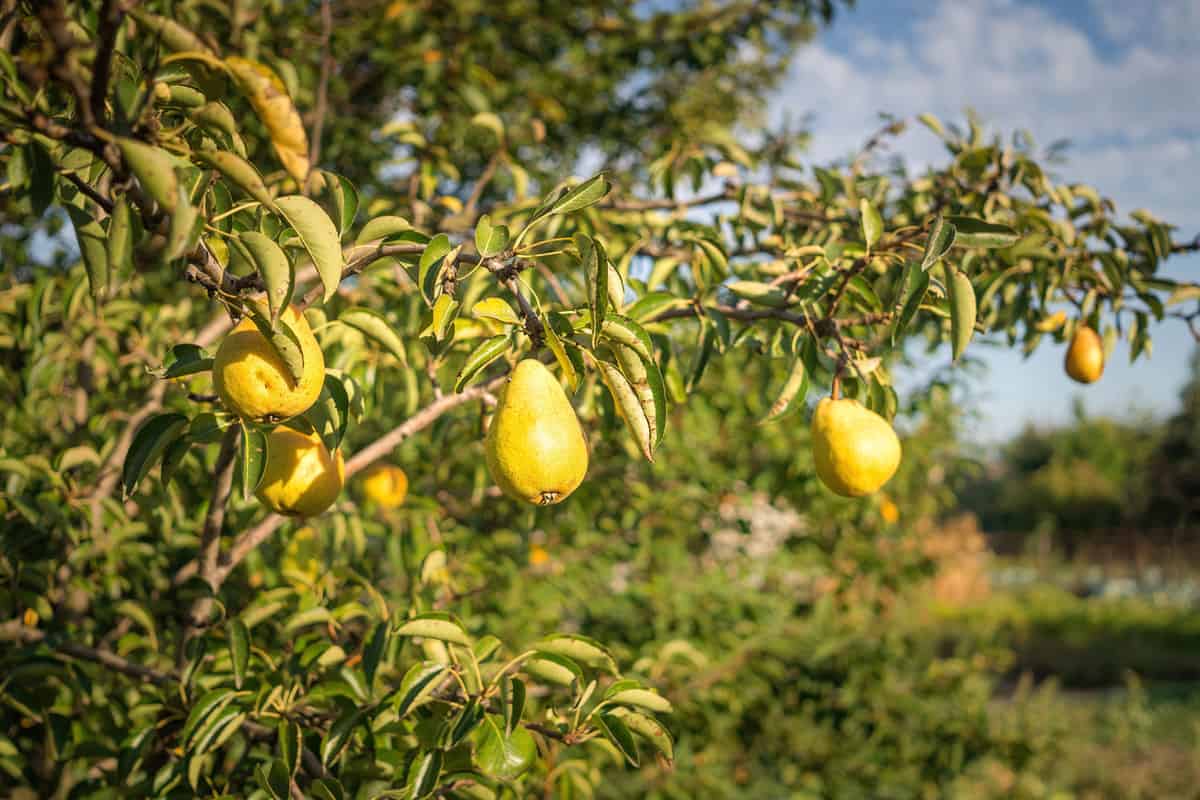
These trees prefer sandy loam soil, but pears can tolerate clay soil more than other fruit trees.
Measures should be taken to improve soil drainage and add soil amendments to make the soil richer.
Pears fruits are usually teardrop shaped. However, there are some differences in size, shape, and color depending on your cultivar.
When picking pears, it's best to pick them before they're ripe. Once pears ripen, they tend to fall or bruise when picked.
7. Pomegranate (Punica granatum)
Pomegranates grow on small trees or shrubs. They can reach heights between 16 and 33 feet.
These plants are hardy for USDA zones 8 through 10. They prefer full sun to partial shade.

Pomegranate trees prefer deep loamy soil, however they can tolerate and grow just as well in clay soil as long as it is given nutritional support.
Some of these plants have been known to live for over 200 years.
Pomegranates typically bear fruit from October to February or March to May, depending on if you live in the northern or southern hemisphere.
8. Pecan (Carya illinoinensis)
Pecan trees are large deciduous trees. In rare instances, they can reach up to 144 feet in height. However, they're typically found at heights between 66 and 131 feet.
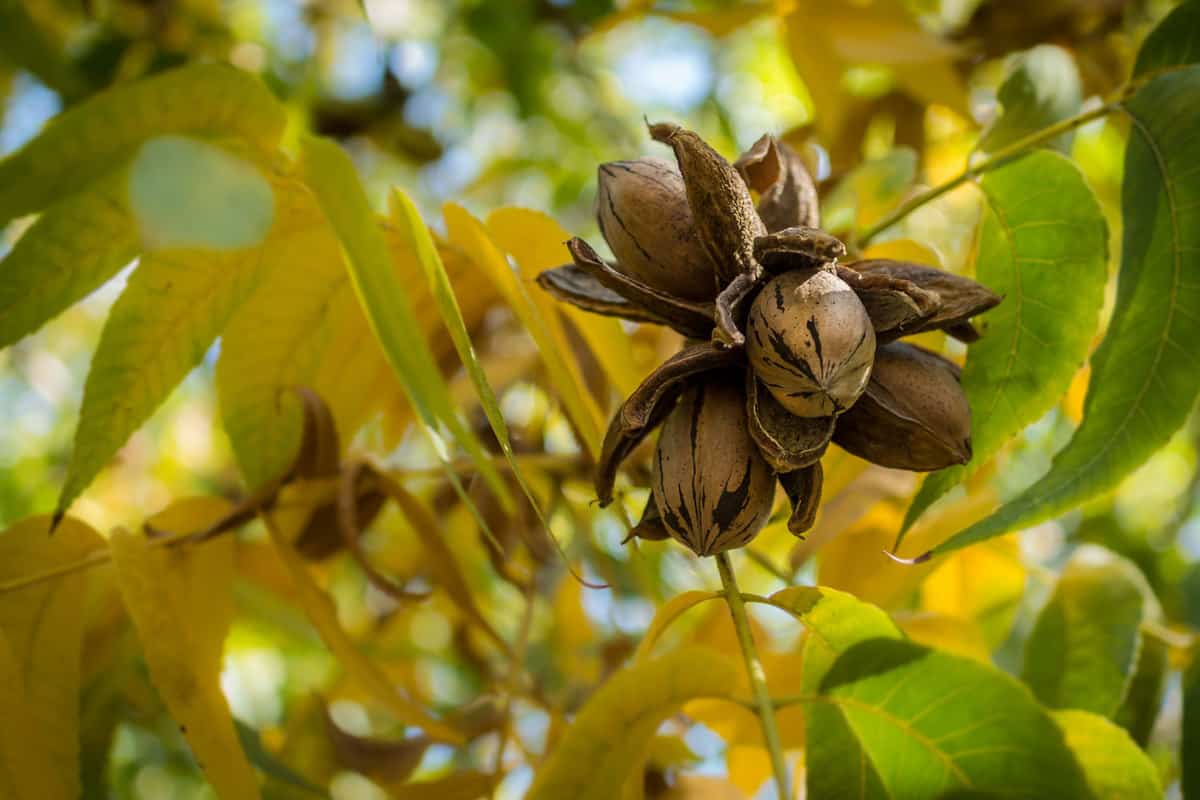
The pecan tree is hardy for USDA zones 5 through 9. You should plant them in an area where they'll receive full sun.
These are large trees so be aware of its growth requirements and make sure to give them up to 60 feet of space to grow into.
Pecan trees grow best in well-drained, sandy, and silt loam soil. However, you can still plant them in clay soil as long as the soil has been amended and loosened for better drainage.
9. Black Walnut (Juglans nigra)
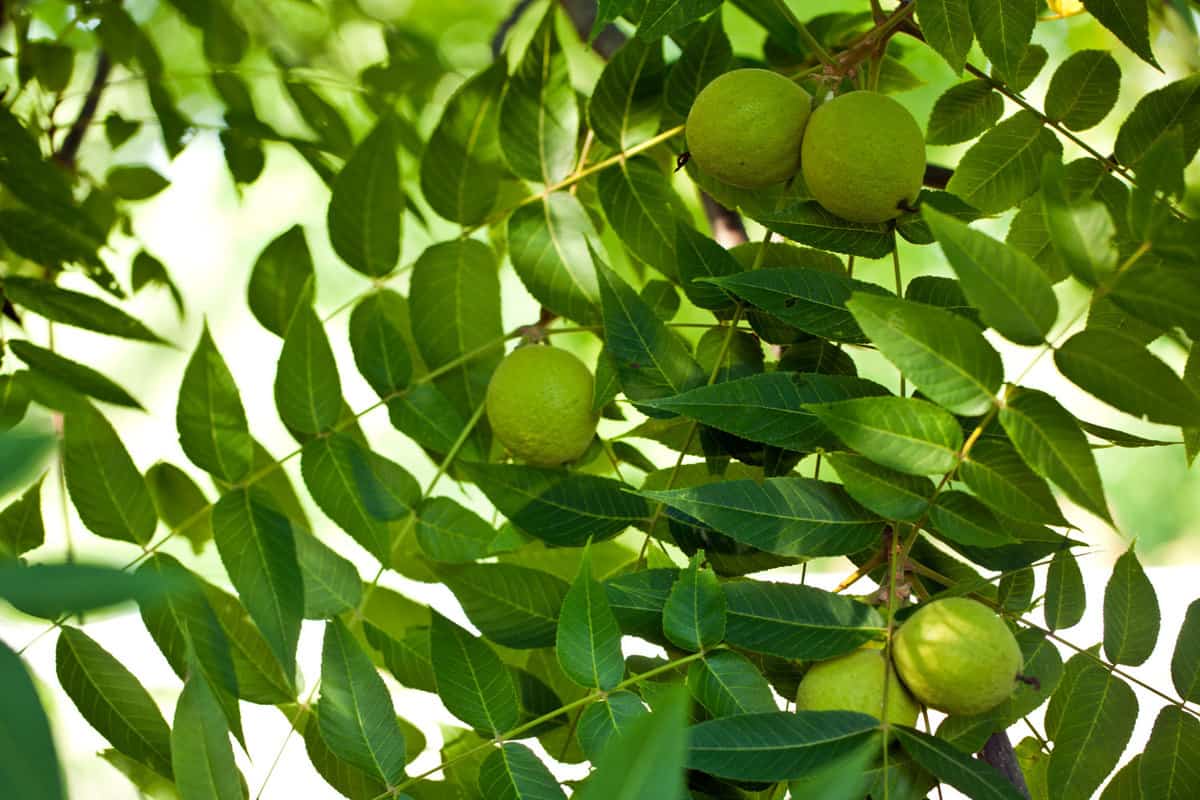
The black walnut is a large tree that can reach up to 75 feet. Due to the juglone it produces, it's difficult to
These trees live around 130 years. Black walnut trees will take some patience. It can take them up to 20 years to get large yields of nuts.
Black walnut trees are tolerant of many soil conditions. It tolerates anything from clay to sand and soil that is occasionally wet to very dry. This tree prefers full sun and isn't tolerant of much shade. The black walnut is hardy for USDA zones 4 through 9.
10. Cherry Plum (Prunus cerasifera)
Cherry plum is a large shrub or a small tree. It can reach heights between 25 and 40 feet.
This tree flowers early, usually around mid-February. The cherry plum bears edible fruit from July to September.
Cherry plums vary from sweet to sour. They are an excellent choice for making jams.
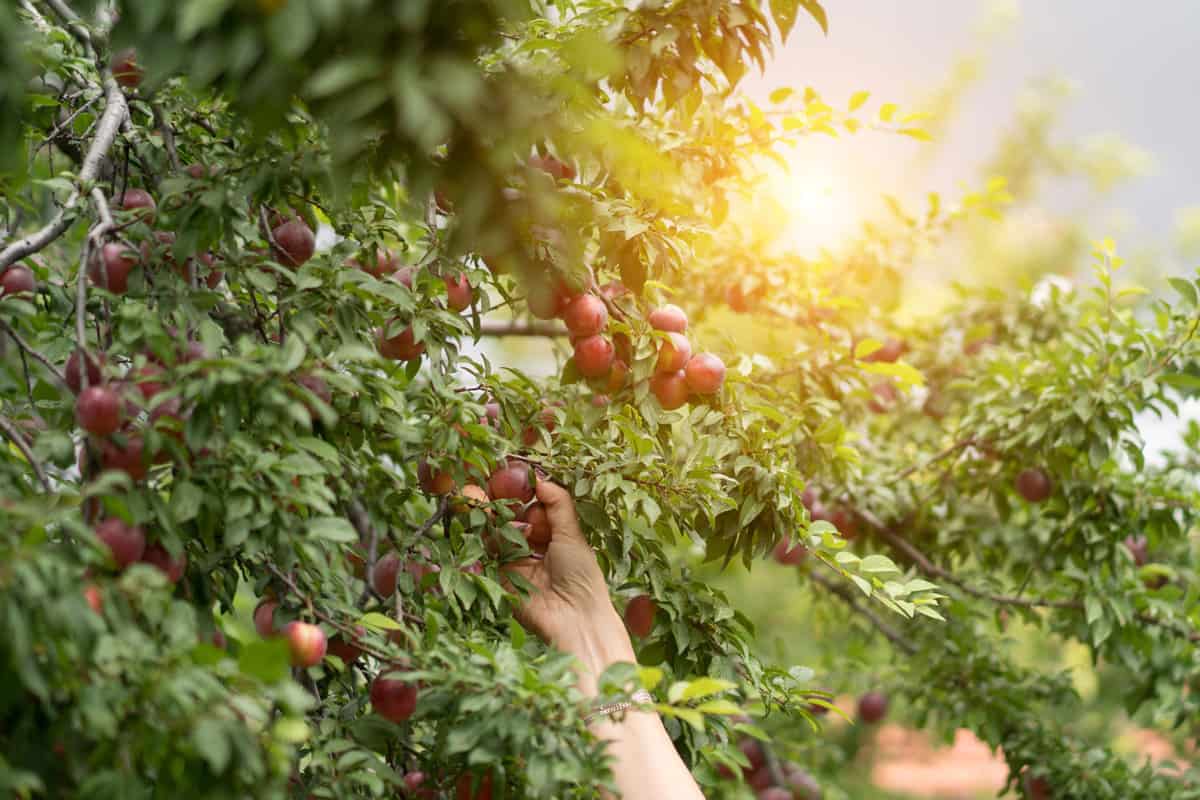
This tree is hardy for USDA zones 5 through 8. You should plant cherry plums in locations that receive full sun.
They are adaptable to clay soils as long as it has good drainage. Mixing in some organic compost will help it thrive in clay soil.
Unfortunately, cherry plums are a problem for some species. It can be toxic to cats, dogs, and horses. It is also poisonous to humans.
The stems, leaves, and seeds all contain cyanide. It is also a short-lived tree. Cherry plums usually only live up to 20 years.
How Do You Prepare Clay Soil For Fruit And Nut Trees?
One of the most important things for these trees to thrive is well-drained soil.
Clay soil is comprised of tiny particles. These particles make it harder for water to pass through, making the dirt saturated for long periods.
To remedy this, you can add in compost, wood shavings, or other organic matter to help your soil drain better.
You can use a layer of compost on top. However, if it's your first time amending the soil, you may want to incorporate it into the top 12 inches of soil.
Ever considered adding sand to clay soil? Check out this post before you do: Should You Add Sand To Clay Soil?
What Is The Best Soil For Fruit And Nut Trees?
Typically, most fruit and nut trees will prefer a loamy soil type. However, there will be different requirements depending on the type of tree you're planting.
It's also important to know the pH level that your tree requires. Many fruit trees require a pH level between 6.0 and 7.0. Nut trees tend to prefer soils with a pH between 5.8 and 7.0.
Test your soil to determine its pH level. This will help you determine how to amend your soil and can help you decide which plants to choose.
You can also test your soil's drainage with a hole and some water. Dig a hole at least 12 inches deep and up to 12 inches wide. Fill the hole with water, let the water drain, and then fill the hole again.
If the water drains in two to three hours, it means your soil has good drainage.
If it takes less than two hours or longer than ten hours to drain, this is an indicator that your soil has drainage problems.
Check out this soil pH meter tester on Amazon.
Amendment is the Solution for Clay Soil
Clay soil doesn't have to prevent you from growing beautiful trees that produce food! Depending on your conditions, you may need to amend your soil.
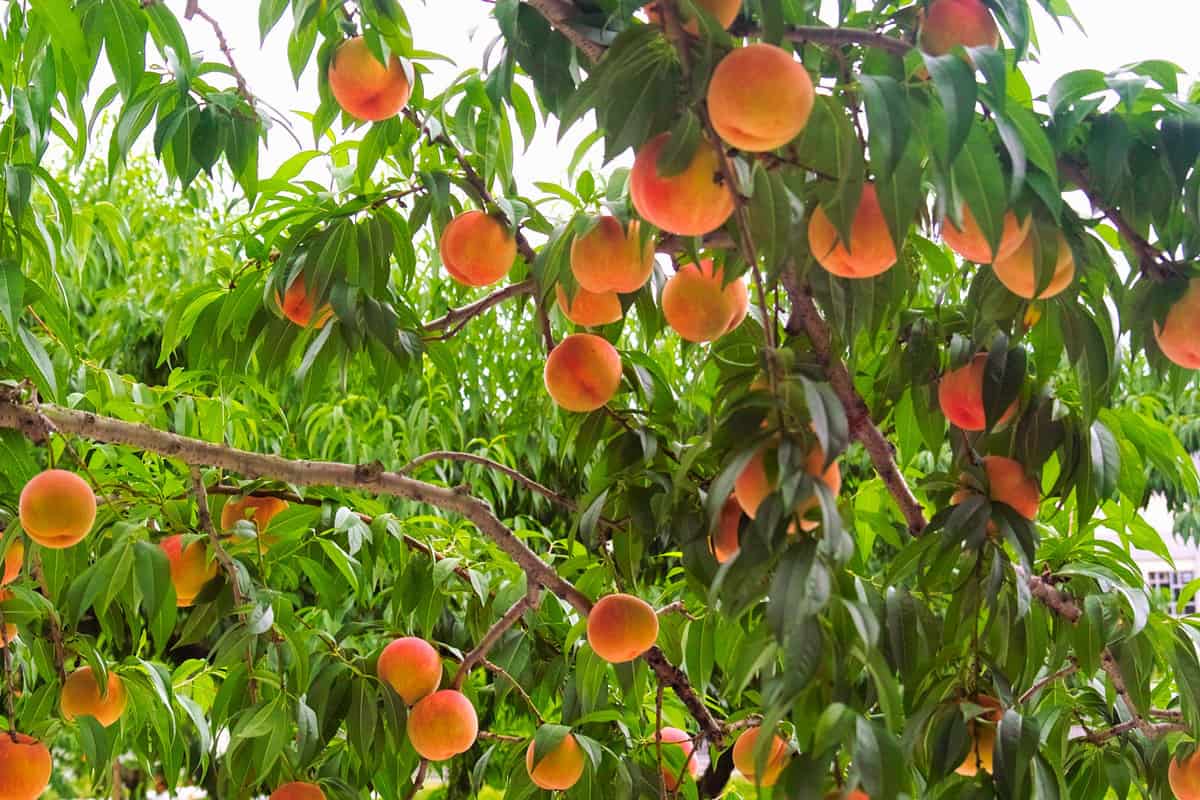
You can add in organic matter to help your soil drain better and add nutrients.
With the proper care, you can have your own fruit or nut-bearing tree in your clay soil garden!
Again, here's the rundown of the fruit and nut trees that will tolerate clay soil with amendments.
- Apples (Malus domestica)
- Star fruit (Averrhoa carambola)
- Elderberry (Sambucus canadensis)
- Fig (Ficus carica)
- Peach (Prunus persica 'Redhaven')
- Pear (Pyrus communis)
- Pomegranate (Punica granatum)
- Pecan (Carya illinoinensis)
- Black walnut (Juglans nigra)
- Cherry plum (Prunus cerasifera)
For more soil tips, you can head on over to these articles:
How Much Compost To Add To Clay Soil
Ground Cover Plants For Clay Soil
